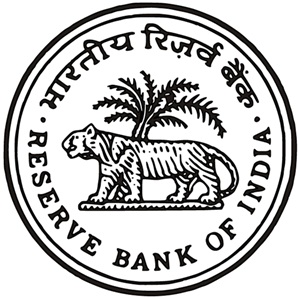The Reserve Bank of India (RBI) today announced a further 25 basis reduction in its key policy repo rate from 5.40 points to 5.15 points– the lowest levels in nearly a decade - stepping up its efforts to kickstart an economy growing at its slowest pace in six years.

“On the basis of an assessment of the current and evolving macroeconomic situation, the Monetary Policy Committee (MPC) at its meeting today (October 4, 2019) decided to: reduce the policy repo rate under the liquidity adjustment facility (LAF) by 25 basis points to 5.15 per cent from 5.40 per cent with immediate effect. Consequently, the reverse repo rate under the LAF stands reduced to 4.90 per cent, and the marginal standing facility (MSF) rate and the Bank Rate to 5.40 per cent,” RBI stated in a release.
The central bank, which also sharply trimmed its 2019-20 growth forecast, said that it will maintain its “accommodative” policy stance “as long as it is necessary” to revive growth, and ensure inflation remains within target.
The MPC also decided to continue with an accommodative stance as long as it is necessary to revive growth, while ensuring that inflation remains within the target of 4 per cent within a band of +/- 2 per cent, it added.
RBI noted that growth in gross domestic product (GDP) slumped to 5.0 per cent in Q1:2019-20, extending a sequential deceleration to the fifth consecutive quarter. Of its constituents, private final consumption expenditure (PFCE) slowed down to an 18-quarter low. Gross fixed capital formation (GFCF) improved marginally on a sequential basis but remained muted as in the preceding quarter. Government final consumption expenditure (GFCE) cushioned the overall loss of momentum to some extent.
On the supply side, gross value added (GVA) growth decelerated to 4.9 per cent in Q1:2019-20, pulled down by manufacturing growth, moderating to 0.6 per cent. Agriculture and allied activities were lifted by higher production of wheat and oilseeds during the 2018-19 rabi season.
Growth in the services sector was stalled by construction activity.
The first advance estimates of major kharif crops for 2019-20 have placed production of foodgrains 0.8 per cent lower when compared with the last year’s fourth advance estimates. Looking ahead at the rabi season, overall prospects of agriculture have brightened considerably, positioning it favourably for regenerating employment and income, and the revival of domestic demand.
Industrial activity, measured by the index of industrial production (IIP), weakened in July 2019 (y-o-y), weighed down mainly by moderation in manufacturing. In terms of uses, the production of capital goods and consumer durables contracted.
The output of eight core industries contracted in August, pulled down by coal, electricity, crude oil and cement. Capacity utilisation (CU) in the manufacturing sector, measured by the OBICUS (order books, inventory and capacity utilisation survey) of the Reserve Bank, declined to 73.6 per cent in Q1:2019-20 from 76.1 per cent in the previous quarter. However, seasonally adjusted CU rose to 74.8 per cent in Q1:2019-20 from 74.5 per cent in Q4:2018-19. Manufacturing firms polled for the industrial outlook survey (IOS) expect capacity utilisation to moderate in Q2:2019-20.
High frequency indicators suggest that services sector activity weakened in July-August. Indicators of rural demand, viz, tractor and motorcycles sales, contracted. Of underlying indicators of urban demand, passenger vehicle sales contracted in July-August, while domestic air passenger traffic accelerated in August. The sales of commercial vehicles, a key indicator for the transportation sector, contracted by double digits in JulyAugust.
Of the two indicators of construction activity, finished steel consumption decelerated sharply in August and cement production contracted. The services PMI moved into contraction in September 2019, dragged down mainly by a decline in new business inflows.
Retail inflation, measured by y-o-y changes in the CPI, moved in a narrow range of 3.1- 3.2 per cent between June and August. While food inflation picked up, fuel prices moved into deflation. Inflation excluding food and fuel softened in August.
Markets expect further easing of rates, with the RBI seen delivering another 15-basis point cut at its December policy, before an extended pause
India’s cumulative rate cuts totalling 135 bps make it the most aggressive central bank in Asia. The RBI’s repo rate is now at its lowest levels since March 2010, when it stood at 5 per cent, following the global financial crisis.
The stock markets remained neutral to RBI rate cut, as the broader NSE Index, NSEI, which rose 0.60 per cent before the policy decision, turned negative after the rate cut and was last trading down 0.62 per cent.
The 10-year benchmark bond yield rose to 6.63 per cent from 6.59 per cent before the announcement, while the rupee weakened slightly to 70.97 per dollar.























